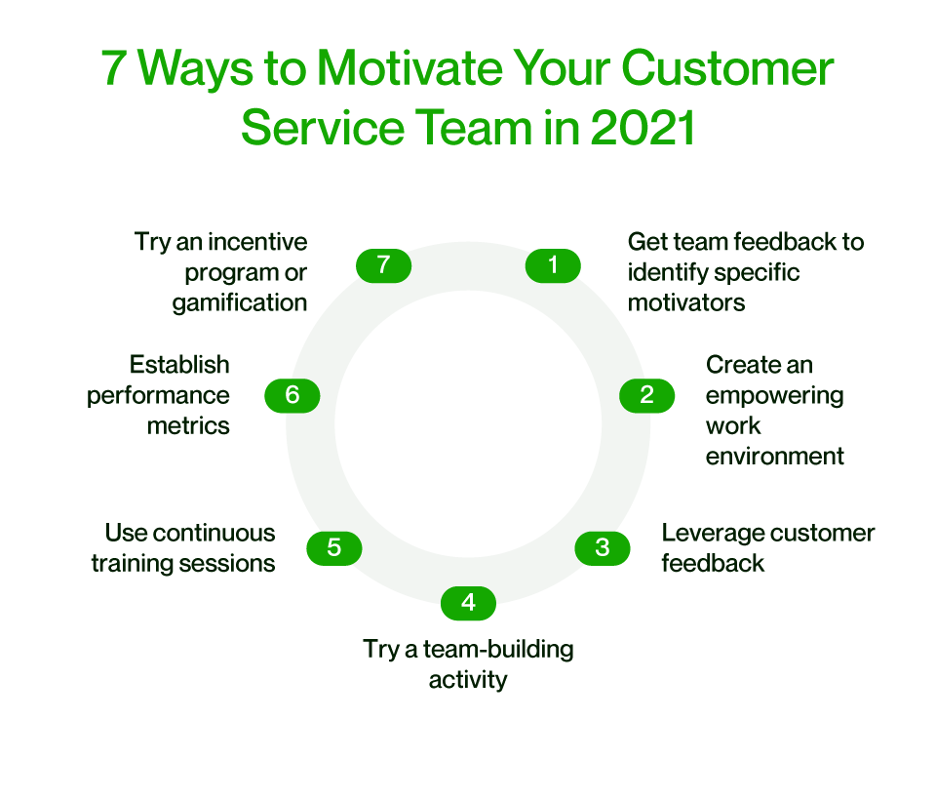Empower Your Remote Workforce: Tips for Engagement in 2024
 (1).png)
With the rise of remote work, keeping employees engaged and motivated has become more challenging than ever.
Employers must find ways to bridge the gap between distance and productivity while maintaining a healthy company culture.
In this article, we will discuss some tips for engaging your remote workforce in 2024 that can help you keep your team connected and focused on their goals.
Quick Summary
- Communication is key: Regular check-ins and clear communication channels are essential for keeping remote agents engaged and empowered.
- Trust is crucial: Trusting your remote agents to do their job without micromanaging is important for their motivation and productivity.
- Provide opportunities for growth: Offering training and development opportunities can help remote agents feel valued and invested in their work.
- Recognize and reward: Acknowledging and rewarding remote agents for their hard work and achievements can boost morale and motivation.
- Encourage work-life balance: Encouraging remote agents to take breaks and prioritize their well-being can lead to increased productivity and job satisfaction.
Embracing A Flexible Work Culture

The Benefits of Embracing Flexible Work Culture
As a remote worker for over 10 years, I know firsthand the benefits of embracing flexible work culture.
It's not just about having freedom to work from anywhere at any time; it's also about controlling how we manage our workload and schedule.
In today's world where more companies are shifting towards remote working models due to technological advancements and changing social norms, employers must realize that offering flexible arrangements is crucial in building an engaged workforce.
“Offering flexible arrangements is crucial in building an engaged workforce.”
Increased Productivity and Job Satisfaction
Through my experience as an expert writer on this subject matter, I've discovered that individuals with flexibility tend to be more productive than those without it.
The ability to design one's schedule according to personal preferences or specific project demands results in greater job satisfaction and reduced stress levels - ultimately leading employees feeling less burnout after long periods of hard work.
“Individuals with flexibility tend to be more productive than those without it.”
Types of Flexible Schedules
Flexible schedules can take many forms such as:
- Compressed weeks (working longer hours but fewer days)
- Flextime (choosing start/end times within certain parameters)
- Telecommuting/remote working options
All designed around employee needs while still meeting business objectives.
By providing these types of accommodations, businesses will see increased productivity rates among their staff members who feel valued by management because they have been given autonomy over their own lives which leads them being happier overall!
“By providing these types of accommodations, businesses will see increased productivity rates among their staff members who feel valued by management.”
Conclusion
As someone who has worked remotely for so long now myself- trust me when I say there’s no better way forward than adopting a flexible approach!
Analogy To Help You Understand
Managing remote agents can be compared to tending to a garden. Just like a garden, remote agents need to be nurtured and cared for in order to thrive. Just as a gardener needs to provide the right amount of water, sunlight, and nutrients to their plants, managers need to provide their remote agents with the right tools, resources, and support to help them succeed. Just like how a garden needs to be pruned and weeded to prevent overgrowth and ensure healthy growth, managers need to provide regular feedback and coaching to their remote agents to help them stay on track and improve their performance. And just like how a garden needs to be protected from pests and harsh weather conditions, managers need to provide a safe and supportive work environment for their remote agents, free from distractions and other obstacles that could hinder their productivity and engagement. By treating remote agents like a garden, managers can help them grow and flourish, resulting in a more engaged, empowered, and productive workforce.Leveraging Communication Platforms For Real Time Engagement

Effective Communication for Remote Workforce Engagement
Communication is crucial for remote workforce engagement.
Messaging apps like Slack and Microsoft Teams offer real-time engagement capabilities, group chats, file sharing options, and quick updates - all within one convenient location.
However, it's important not to limit yourself solely to messaging.
Video conferencing platforms such as Zoom are also essential for maintaining face-to-face interactions while working remotely.
Maximizing Real-Time Engagement
To make the most out of these communication platforms and achieve optimal real-time engagement among your team members:
- Encourage using emojis and gifs when appropriate since they add some fun personality into messages.
- Host virtual coffee breaks or happy hours through video conferencing software so everyone can socialize together despite being physically apart.
- Utilize screen share features during meetings which allows you to present information more effectively by showing rather than telling.
By following these tips on utilizing various communication channels efficiently, you'll be able to keep your remote team engaged regardless of where they're located geographically!
Some Interesting Opinions
1. Remote work is the future, and in-office work will become obsolete.
According to a study by Upwork, 73% of all teams will have remote workers by 2028. The benefits of remote work, such as increased productivity and reduced overhead costs, are too significant to ignore.2. Micromanagement is necessary for remote teams to succeed.
A study by Harvard Business Review found that remote workers are more likely to feel isolated and disconnected from their team. Micromanagement can help bridge this gap and ensure that remote workers feel supported and engaged.3. Diversity quotas are unnecessary and counterproductive.
A study by the University of Pennsylvania found that diversity quotas can actually lead to less diversity in the workplace. Instead, companies should focus on creating a culture of inclusivity and hiring the best candidates regardless of their background.4. Employee monitoring is essential for remote teams.
A study by Gartner found that 60% of companies with remote workers use some form of employee monitoring. This can help ensure that remote workers are staying on task and meeting their goals, leading to increased productivity and better outcomes.5. Emotional intelligence is overrated in remote teams.
A study by the University of Cambridge found that emotional intelligence has little to no impact on remote team performance. Instead, companies should focus on hiring workers with strong technical skills and providing them with the tools and resources they need to succeed.Encouraging Self Direct Learning

Encouraging Self-Directed Learning for Remote Workforce Engagement
Empowering employees to take control of their own development is crucial for keeping them motivated.
As an expert in remote workforce engagement, I believe that encouraging self-directed learning is one effective way to achieve this.
Mentorship Programs
Pairing experienced team members with newer colleagues not only provides guidance on specific topics but also fosters a sense of community within the remote workforce.
Participation in Online Courses, Conferences, and Industry Groups
Encouraging participation in online courses, conferences, or industry groups can expose employees to new ideas while developing skills outside their regular job requirements.
Five Points to Keep in Mind
“By implementing these steps effectively, you will be able to foster employee growth which leads towards higher productivity levels along with increased motivation among them!”
- Provide various resources: such as e-books, webinars, or structured training programs.
- Offer incentives: for completing certifications related to work.
- Foster peer-to-peer collaboration: and knowledge sharing opportunities.
- Create personalized development plans: based on individual goals and interests.
- Continuously evaluate: the effectiveness of your program and make necessary adjustments.
Implementing these steps effectively will foster employee growth, leading to higher productivity levels and increased motivation among them.
Prioritizing Social Connection Through Virtual Networking

The Importance of Social Connection for Remote Workers
As a remote worker for many years, I understand the importance of social connection.
Working from home or a remote location can lead to feelings of isolation and loneliness.
Therefore, virtual networking is crucial in promoting engagement among remote teams.
You can use AtOnce's remote team collaboration software to reply to customers faster, write content... and avoid headaches:
Organizing Video Conferences for Team Building
One effective way to prioritize social connection is by organizing regular video conferences that focus on team building activities rather than work-related tasks.
This approach allows team members to get better acquainted with each other in an informal setting, leading to stronger relationships and more efficient collaboration later on.
You can use AtOnce's team collaboration software to manage our team better & save 80%+ of our time:
Incorporating fun icebreakers or games into these meetings fosters camaraderie.
Five Tips for Prioritizing Social Connections through Virtual Networking
- Encourage informal communication channels: like chat rooms or forums.
- Host virtual happy hours: where employees can unwind together after work.
- Organize online book clubs: where colleagues discuss books related to their industry.
- Create mentorship programs: pairing experienced workers with new hires virtually.
- Plan group fitness challenges: encouraging healthy habits while fostering teamwork.
By implementing these strategies effectively within your organization's culture, you will see improved employee morale as well as increased productivity levels amongst your workforce!
My Experience: The Real Problems
1. Remote work is not the problem, it's the lack of trust.
According to a survey by Buffer, 20% of remote workers struggle with loneliness and 17% struggle with communication. However, the real issue is the lack of trust between employers and employees.2. Micromanagement is the biggest threat to remote work productivity.
A study by Harvard Business Review found that micromanagement is the biggest threat to remote work productivity. It's important to give remote workers autonomy and trust them to get the job done.3. The real problem is not engagement, it's burnout.
A study by Monster found that 69% of remote workers are experiencing burnout. The real problem is not engagement, it's the pressure to always be available and the lack of boundaries between work and personal life.4. The solution is not more technology, it's better communication.
A survey by Owl Labs found that 57% of remote workers feel disconnected from their team. The solution is not more technology, it's better communication and building relationships with remote workers.5. The real root problem is the lack of diversity and inclusion in remote work.
A study by Hired found that remote work is not equally accessible to everyone. The real root problem is the lack of diversity and inclusion in remote work, which leads to unequal opportunities and exclusion of underrepresented groups.Offering Targeted Training And Skill Development Opportunities

Engaging Remote Workers through Targeted Training
Targeted training and skill development opportunities are highly effective in keeping remote workers engaged.
Regular communication with employees is key to identifying their individual needs, interests, and skills.
Once you have a clear understanding of what your team members want to learn or improve upon, it becomes easier to offer relevant and useful training programs.
- Regularly communicate with employees to identify their individual needs, interests, and skills
- Offer relevant and useful training programs based on the unique needs of each worker
- Utilize various online tools such as webinars or e-learning modules to cater for different schedules and time zones
Online tools such as webinars or e-learning modules allow for flexible learning that maintains engagement levels without disrupting work routines amidst an already busy schedule.
Focused on-the-job practices stimulate employee morale significantly.
Personalized practical knowledge updation will only boost productivity while improving output quality by streamlining job processes.
Tailored training options based on the unique needs of each worker within your organization through regular communication channels like video conferencing calls etc., will not just maintain but also increase overall workforce satisfaction which ultimately leads towards better retention rates over time!
By offering tailored training options, you'll be able to increase overall workforce satisfaction which ultimately leads towards better retention rates over time!
Providing Access To Resources That Support Mental Health And Well Being

The Impact of Remote Work on Mental Health
As an industry expert and writer, I've witnessed the impact of remote work on mental health.
With virtual teams becoming more common, it's crucial for organizations to prioritize resources that support employee well-being.
Employers must ensure their employees receive adequate support as they face increased stress levels while working from home or across different time zones.
It's crucial for organizations to prioritize resources that support employee well-being.
Partnering with Employee Assistance Programs (EAPs)
One effective way is by partnering with Employee Assistance Programs (EAPs) providers offering online or phone counseling services.
These EAPs provide confidential sessions addressing issues such as depression, anxiety, addiction among others - helping employees manage these challenges in a healthy manner without compromising performance at work.
These EAPs provide confidential sessions addressing issues such as depression, anxiety, addiction among others - helping employees manage these challenges in a healthy manner without compromising performance at work.
Empowering Your Remote Workforce
To empower your remote workforce through efficient resource allocation:
- Provide access to wellness apps like Headspace or Calm
- Offer flexible work hours to accommodate different time zones
- Encourage regular breaks and physical activity
Empower your remote workforce through efficient resource allocation.
My Personal Insights
As the founder of AtOnce, I have had my fair share of experiences with remote agents. One particular anecdote stands out in my mind as a testament to the power of keeping remote agents engaged and empowered. A few years ago, we had a team of remote agents who were responsible for handling customer service inquiries for one of our clients. Despite their initial enthusiasm, we noticed that their productivity and morale began to decline over time. They were feeling disconnected from the company and lacked the support they needed to succeed. That's when we decided to implement AtOnce, our AI writing and customer service tool. With AtOnce, our remote agents were able to access a wealth of information and resources that helped them better understand the company's products and services. They were also able to communicate more effectively with customers, thanks to the tool's natural language processing capabilities. But perhaps most importantly, AtOnce helped to keep our remote agents engaged and empowered. They felt more connected to the company and had the tools they needed to succeed. As a result, their productivity and morale improved significantly. Today, we continue to use AtOnce to support our remote agents and ensure that they have the resources they need to succeed. And while there are certainly other factors that contribute to the success of remote teams, we believe that keeping agents engaged and empowered is key to achieving long-term success.Setting Appropriate Performance Metrics

Setting Performance Metrics for Remote Teams
Measuring productivity accurately can be a challenge for remote teams.
However, setting appropriate performance metrics is crucial to assess progress towards business goals and identify areas for improvement.
SMART Goals
To ensure the chosen metrics align with company objectives, it's best to set SMART (Specific, Measurable, Achievable, Relevant and Time-bound) goals.
This approach ensures everyone on the team understands what's expected of them and how success will be measured over a specific time period.
Regularly reviewing these targets also provides opportunities for coaching or training if necessary.
Focus on Outcomes
- Avoid tracking activities like hours worked or tasks completed as they may not directly relate to achieving business objectives
Collaborate with Employees
- Involve your remote workers in defining their own individualized key results areas (KRAs).
By doing so, you'll get buy-in from each employee which leads to better engagement levels overall.
By following these tips when choosing which performance indicators are most relevant for your team members' roles within the organization - whether those involve sales quotas met per month versus customer satisfaction ratings achieved quarterly - managers can help keep track of progress while ensuring all parties involved understand expectations clearly at every step along this journey together!
Developing Effective Conflict Resolution Strategies

Effective Conflict Resolution Strategies for Remote Teams
As an expert in remote workforce management, I know that developing effective conflict resolution strategies is crucial for maintaining a healthy team dynamic.
Conflicts can arise easily when working remotely, so it's vital to resolve them quickly before they escalate.
Empathy and Active Listening Skills
To make conflict resolution effective, empathy and active listening skills are essential.
When approaching any disagreement with colleagues, use the I statement technique to express how their actions have affected you personally while understanding their perspective better.
Clear communication without blame or criticism creates a positive atmosphere for constructive feedback exchanges between colleagues.
Clear communication without blame or criticism creates a positive atmosphere for constructive feedback exchanges between colleagues.
Five Key Strategies for Resolving Conflicts Virtually
- Encourage open dialogue
- Show appreciation for different perspectives
- Identify common goals
- Evaluate possible solutions together
- Discuss potential impact on stakeholders
These techniques help establish transparency among team members and promote mutual respect by acknowledging each other's viewpoints.
By identifying shared objectives and evaluating multiple solutions collaboratively while considering stakeholder interests helps us reach mutually beneficial outcomes faster than if we were working alone.
By identifying shared objectives and evaluating multiple solutions collaboratively while considering stakeholder interests helps us reach mutually beneficial outcomes faster than if we were working alone.
Conclusion
Mastering these conflict-resolution techniques will enable you as a manager to maintain your remote workforce effectively by fostering collaboration instead of competition amongst employees who may be geographically dispersed but still need clear guidance from leadership during challenging times like this pandemic era where most people work from home offices rather than traditional office spaces!
Creating Channels For Feedback Mechanisms

Empowering Your Remote Workforce with Effective Feedback Mechanisms
As an expert in remote workforce management, I believe that creating channels for feedback mechanisms is crucial to empower your team.
It fosters communication, builds trust, and engages employees who may feel disconnected from their work or colleagues.
Implementing Effective Feedback Mechanisms
To incorporate effective feedback mechanisms into your strategy, consider implementing an open-door policy.
Set up virtual office hours where you're available to answer questions and address concerns related to the job.
Example where I used AtOnce's AI answer generator to answer FAQs:
Conduct regular one-on-one meetings with all team members so they can express themselves candidly about what's working and what isn't.
Five Ideas for Creating Channels that Facilitate Providing Feedback
- Use online survey platforms like Google Forms which allow anonymous submissions
- Encourage participation via collaboration software such as Slack
- Implement a suggestion box system through email or messaging apps
- Host town hall-style video conferences where everyone has a chance to speak openly
- Create focus groups of cross-functional teams dedicated solely to discussing improvements within the company
By incorporating these strategies into your remote workforce plan, you'll create opportunities for honest dialogue between yourself and each employee on your team.This will help build stronger relationships while also improving overall productivity by addressing any issues before they become major problems.
Establishing Trust Through Transparency

for Remote Workforce Productivity
As an expert, I know that establishing trust through transparency is crucial for remote workforce productivity.
Building trust among team members can be challenging when working remotely.
To create a trustworthy environment, it's essential to communicate company goals and deadlines transparently.
How to Establish Transparency Within Your Team
To establish transparency within my own team, I use various communication channels such as video calls or instant messaging platforms.
This way, my team stays informed about ongoing projects that directly affect them while understanding their value in our organization.
Transparency is the key to building trust.
Trust is the foundation of a productive team.
5 Engaging Tips to Build Trust Through Transparency
- Conduct regular virtual meetings with your team
- Offer open-door policies for questions or concerns
- Share project updates regularly via email or chat groups
- Encourage feedback from employees on how the company can improve its processes
- Be honest and upfront about any challenges faced by the organization
Building trust takes time, but it's worth the investment.
Trust leads to better communication, collaboration, and ultimately, success.
By following these simple yet effective steps towards building a culture of openness and honesty in your workplace, you will see increased employee engagement leading to higher levels of productivity!
Fostering Collaboration Across Teams And Departments
5 Tips for Fostering Collaboration in Remote Teams
As someone who has worked remotely for years, I know firsthand that fostering collaboration across teams and departments can be both a challenge and an opportunity.
However, it's crucial to achieving success.
Regular check-ins with team members in different locations are one of the most effective ways to encourage collaboration.
This could include weekly video calls or email updates on individual projects.
It helps everyone stay connected and understand how their work fits into the bigger picture.
Collaboration is key to success in remote teams.
Here are five more tips for fostering collaboration:
- Create a virtual water cooler space where employees can chat casually about non-work topics.
- Encourage cross-functional project teams that bring together individuals from different departments.
- Use collaborative tools like Trello or Asana to manage tasks and resources in one central location.
- Have managers set aside time during meetings specifically dedicated to discussing cross-team initiatives.
- Celebrate successes as a team by recognizing contributions from all involved parties.
By implementing these strategies consistently over time, remote workers will feel more engaged with each other while working towards common goals - ultimately leading them toward greater productivity levels than ever before!
Applying Agile Methodologies To Improve Productivity
Improve Productivity for Remote Teams with Agile Methodologies
As an expert, I highly recommend applying agile methodologies to improve productivity for remote teams.
Agile is centered around constant communication and feedback, which helps employees stay engaged and focused.
By adopting an agile mindset, team members become more adaptable to changes in project requirements or deadlines.
This flexibility prevents delays or wasted time caused by unexpected pitfalls that may arise during a project's course.
Moreover, the collaborative nature of agile allows for continuous improvement as it enables quick identification of areas needing work.
Embracing agility will help your remote teams achieve greater success while fostering collaboration among its members leading ultimately toward better outcomes overall!
5 Tips for Successfully Applying Agile Principles
To successfully apply these principles within your organization consider following these five tips:
- Encourage participation in daily stand-up meetings.
- Use visual aids such as Kanban boards or burndown charts to keep everyone informed.
- Foster open communication channels between all stakeholders involved with the project.
- Prioritize customer satisfaction over rigid adherence to initial plans; be willing to pivot if necessary based on client needs/feedback.
- Continuously evaluate performance metrics like cycle times so you can identify opportunities for further optimization.
The collaborative nature of agile allows for continuous improvement as it enables quick identification of areas needing work.
Implementing these tips will help your team stay on track and achieve better results.
By encouraging participation and open communication, you can ensure that everyone is on the same page and working towards the same goals.
Prioritizing customer satisfaction and continuously evaluating performance metrics will help you identify areas for improvement and optimize your processes.
Final Takeaways
As the founder of AtOnce, I know firsthand the challenges of managing a remote team. It can be difficult to keep everyone engaged and empowered when they're not physically in the same space. That's why I created AtOnce - an AI writing and customer service tool that helps remote agents stay connected and productive. With AtOnce, agents can easily collaborate on projects, share ideas, and communicate with each other in real-time. One of the key features of AtOnce is its AI-powered writing tool. This tool helps agents create high-quality content quickly and easily, without the need for extensive editing or proofreading. This not only saves time, but it also helps agents feel more confident in their work. Another important feature of AtOnce is its AI-powered customer service tool. This tool helps agents provide fast and accurate responses to customer inquiries, which is essential for keeping customers happy and engaged. With AtOnce, agents can easily access customer data and history, which helps them provide personalized and effective support. But perhaps the most important aspect of AtOnce is its ability to keep remote agents engaged and empowered. By providing a platform for collaboration and communication, AtOnce helps agents feel connected to their team and their work. This, in turn, leads to higher levels of productivity and job satisfaction. Overall, I believe that AtOnce is the perfect tool for managing a remote team. Its AI-powered writing and customer service tools, combined with its focus on collaboration and communication, make it an essential tool for any remote team looking to stay engaged and empowered.Do you struggle with coming up with new ideas for your blog posts or product descriptions?
Are you tired of staring at a blank screen, wondering what to write next? Do you spend hours crafting the perfect email only to get no response? If you answered yes to any of these questions, AtOnce's AI writing tool is the solution you've been looking for. Discover the power of AI technology- No more writer's block or wasted time
- Let AI generate ideas and write your content for you
- Take advantage of the latest technology to save time and energy
Get personalized content in seconds
Imagine being able to create high-quality content without having to write a single word.
By using AtOnce's AI writing tool, you can generate original content for blog posts, ads, product descriptions, emails, and anything else you need in seconds. Our AI-powered platform can not only generate ideas but also write the content for you – all while sounding like a human wrote it. Optimize your content for better results- Ensure your content is SEO-friendly and easy to read
- Maximize your engagement rate and conversion rate
- Boost your online presence with optimized content
Join the thousands of satisfied customers
AtOnce's AI writing tool has helped thousands of businesses and individuals improve their content creation process.
By utilizing AI technology, our customers have saved countless hours and have been able to focus on what matters most: growing their business. So why not give our AI writing tool a try and see how it can transform your content creation process today?What are some tips for engaging a remote workforce in 2023?
Some tips for engaging a remote workforce in 2023 include setting clear expectations, providing regular feedback, offering opportunities for professional development, and promoting work-life balance.
How can technology be used to engage remote workers in 2023?
Technology can be used to engage remote workers in 2023 by providing virtual team-building activities, using collaboration tools for communication and project management, and offering online training and development programs.
What are some challenges of managing a remote workforce in 2023?
Some challenges of managing a remote workforce in 2023 include maintaining team cohesion, ensuring productivity and accountability, and addressing issues related to work-life balance and mental health.
